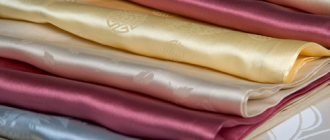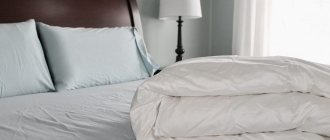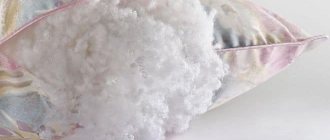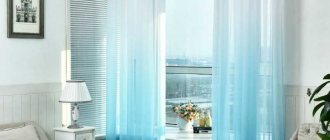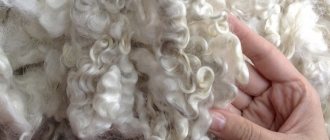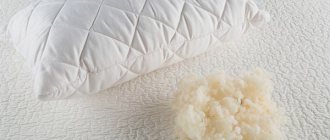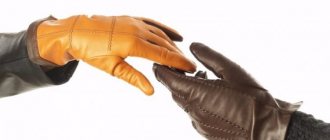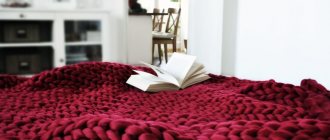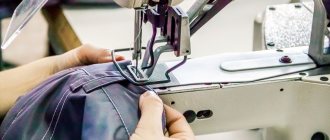Even a beginner can sew a patchwork blanket from squares. A patchwork blanket is a beautiful, colorful and artistically competent home textile. It is not sewn so quickly, and for beginners it may take much more time, but such sewing can be the first truly high-quality thing in the house that you have made with your own hands.
Nuances of patchwork technique
The term “patchwork” is of English origin: “patch” means patch, “work” means work. This type of creativity involves making objects from colored pieces of textiles.
The most striking example is a patchwork quilt. Made by hand, it can be decorated with different patterned ornaments or depict any specific things - it all depends on the imagination of the needlewoman.
Nowadays, patchwork has become a separate stylistic trend, which is often used in design projects. Experienced craftsmen have become adept at creating real works of art from scraps.
Looking at the photo of the quilt, you can see that it can fit into more than just a country style setting. It will also be appropriate in loft and hi-tech styles.
The undeniable advantage of all products made using the patchwork technique is that they are accessible to the population. In the case of independent creation, it is worth noting the simplicity and ease of finding the materials needed for this type of needlework.
Style Description
Patchwork
The word patchwork translated from English means a product made from multi-colored patches .
Initially, things were made from leftover fabrics for economic reasons. This then grew into the process of creating unique, unusual products.
Patchwork is a very hard and painstaking work that deserves respect and admiration.
Sometimes craftswomen create simply works of art consisting of many small pieces.
These include pillows , napkins, bedspreads and baby blankets of extraordinary beauty .
To work you will need:
- Sewing machine.
- Scraps of fabric.
- Fabric for the reverse side (about 1.5 meters by 2.20).
- Needles and pins.
- Threads in the color of the fabric.
- Well sharpened scissors .
The fabric for shreds can be of any texture, but always with the same density and thickness.
You also choose colors according to your taste, but no more than 6-7 different colors .
- Also, experienced needlewomen in master classes advise taking one color as the main one, and the remaining pieces should be harmoniously combined with it.
Patchwork quilt options
The sequence of actions when sewing a product in patchwork depends on which method of execution is chosen for it. The manufacturing technology determines the immediate design of the patchwork quilt.
The following techniques are distinguished:
- traditional;
- watercolor;
- crazy patchwork;
- knitted;
- Japanese;
- well;
- chessboard;
- Russian square.
True masters do not limit themselves to the techniques listed above and invent their own. Any order of combining pieces of fabric is appropriate. There are no strict rules and regulations for this direction of creativity.
Patchwork Basics
You can sew anything from scraps of fabric, for example, extremely practical things, or realize your wildest ideas, letting your imagination fly free. One of the patchwork techniques is called “crazy” (“crazy”), however, it is too complicated for beginning craftswomen.
Sewing from scraps with your own hands is not easy. The work requires time, perseverance and accuracy.
Accessories and tools for needlework
Patchwork requires a certain set of tools. Below is a comprehensive list , there may be some you don't need:
- Sewing machine. Experienced handicraftsmen who make products for sale buy a special one for patchwork. Of course, it makes the job much easier, but if you are sewing only yourself and friends, a regular one will do just fine. For convenience, you need to buy a quilting foot.
- Chalk, soap or quilting pencil.
- Tailor's ruler and measuring tape.
- Seam ripper, large and small scissors.
- Self-healing mat and roller blade.
- Iron. It must be equipped with a steam generator.
- Needles, safety and tailor's pins.
- High-quality threads of different thicknesses and colors.
- Patterns. You can buy them together with a patchwork kit or make them yourself.
- Tracing paper, graph paper, carbon paper.
Making patterns
It only seems so - we randomly cut pieces of fabric and sew anything from the scraps with our own hands. Patterns in patchwork play the same role as a pattern in creating clothes. It is with their production that work on the product begins.
The same templates can be used repeatedly, so to create them, use durable material, preferably transparent plastic, through which you can see the fabric pattern. First, the desired element is drawn (square, rhombus, triangle), then a seam allowance is added and a second contour is drawn.
The finished template looks like a frame. The details of the future product are cut out along its outer contour, and stitched along the inner contour.
Selection and preparation of fabric
It is not necessary to use a special patchwork fabric for needlework - any fabric you like will do. Perhaps the necessary materials can be found at home - pieces left over from sewing clothes or old, but not dilapidated things. Each fabric has its own characteristics:
- Cotton is cheap, easy to cut, holds its shape well and is an ideal raw material for beginning needlewomen. It is used to make bedding and kitchen utensils, curtains, and furniture covers.
- Linen is ideal for background or lining. It is durable and comfortable to sew with, but it wrinkles a lot and is difficult to iron.
- Denim fabric is suitable for creating clothes, rugs, blankets, capes. It looks good with chintz and tartan.
- Silk will look great in any product, but it is difficult to sew with.
- Only experienced craftswomen can work with chiffon, crepe de Chine and other similar fabrics. Their shreds are usually glued to non-woven fabric.
- Wool holds its shape well, but is rarely used in patchwork. Thick fabric is cut into parts without allowance and joined end-to-end on a zigzag machine or glued onto a larger non-woven fabric and stitched.
- Drape, gabardine, and tweed are often used for tapestries, decorated with braid, embroidery, and lace.
Synthetic padding or batting is used as a gasket (middle layer).
Any fabric must be prepared before cutting , otherwise during use the product may fade, shrink, or warp:
- Old items are ripped open, all seams are cut off, and the hem is cut off on new fabric.
- The next step is washing. If this is not a problem with cotton and denim, then wool and silk are laid out in one layer on a wet sheet or towel, rolled into a roll and left for 2-3 hours.
- It is advisable to starch thin material.
- The damp fabric is ironed from the inside out along the grain thread. It is better to use an iron with a steam generator.
For different styles
Those who think that the use of patchwork items is only permissible in simple designs, for example, in Provence, are wrong. Such textile details can be integrated into such complex modern trends as loft, country, art deco, as well as ethnic and marine styles. Patchwork accessories in any interior will become an element that brings coziness and comfort.
Types of fabrics
Patchwork does not impose any requirements on the choice of fabrics. A blanket can combine fabrics of different textures. However, not every material is flexible to use.
Note!
Duvet: TOP-170 photos + video reviews of duvets. Advantages and disadvantages of filler, choice of cover and quiltingBed linen for newborns: requirements for bedding for a newborn. Variety of sizes, materials and patterns of children's underwear (photo + video)
Double bed linen: TOP-170 photo reviews of new designs, choice of size, color and material
Chintz is considered the ideal option. You can also sew a blanket in patchwork:
- From jeans.
- Made from knitwear.
- Made of silk, staple, organza.
- Made from wool.
- From drape.
Pillows made from old jeans
Did you know that you can make a real bed set out of your old jeans? To do this, you only need your desire and a little time, and the appropriate tools, of course.
Pillows made from old jeans look quite stylish
Instructions for creating denim pads:
- To start, take a pair of jeans and cut off the legs.
- Using the template, draw circles on the pant leg.
- We draw a line of about ten centimeters with a marker in order to make a seam along it with another circle.
- We put two circles on top of each other and make a line along the line. Similarly, we connect two more circles with them. Then we smooth out all the seams.
- We take pre-prepared cotton and thin padding polyester squares and insert them into our circles in order: padding polyester squares come first, and cotton ones come next.
- Let's do the same with the rest of the circles, and connect it all into a single canvas.
- We cut off all the rounded edges and install a zipper at the bottom.
- All that remains is to fill the pillow with padding polyester.
This concludes the creation of a pillow made of jeans. Enjoy your masterpiece and sleep well.
Fillers, insulation
Products made using the patchwork technique come in two types: thin and insulated. There is nothing complicated in creating warm models - just select and sew insulation between the front and bottom parts of the future blanket.
The most popular heating materials are:
- foam;
- padding polyester;
- batting;
- holofiber.
In some situations, the choice of filler depends on the external material. Thus, thin and difficult-to-care fabrics like silk require the use of only foam rubber or batting, since only such padding can give the desired shape to the blanket.
Stages of work and stitching techniques
Patchwork consists of 3 main stages :
Selection of fabric pieces
Look at the remaining fabrics at home, sort them by materials and colors.
Preparing scraps for the future bedspread
Or buy in the store those fabrics from which you would like to make a bedspread.
Creating a Sketch
At the second stage, needlewomen come up with a design that they ultimately want to get on the finished product, or select ready-made patterns.
Sewing the patches
The last stage is the direct assembly of the pieces together to obtain a whole canvas .
Also, for the back side of the product you will need a single piece of fabric a layer of synthetic padding placed between the top and bottom sides to give the pillow or blanket shape and volume.
Selection of pieces (shreds)
There are various techniques for stitching pieces together, from connecting squares of the same size to laying out a complex pattern of geometric shapes of various shapes and sizes (triangles, squares, etc.)
The result is unique work, it all depends on your skills, available fabric and imagination.
Types of patchwork according to the method of stitching elements:
- “Quick Squares” – it is based on prefabricated square blocks of different colors.
- “Watercolor” based on the selection of the required color scheme.
- “Strip to stripe” - connecting multi-colored strips of fabric of different lengths at different angles.
- “Log cabin” - stripes go around the square in a spiral.
- “Magic Triangles” is a technique for creating complex shapes from initial triangular scraps.
- “Checkerboard” - the shreds are arranged in a checkerboard pattern.
- “Russian square” is a multi-tiered pattern of a square in the center, triangles and stripes.
- “Honeycomb” - the original pieces of fabric have the shape of a hexagon.
Dimensions
When choosing the size of a blanket, you should be guided by the dimensions of the sleeping place, your own parameters, the degree of your activity at night and individual wishes.
Note!
Pillow for pregnant women - TOP 160 photos + video reviews of pillow designs for pregnant women. Properties and purpose of the pillow. Types of fillers and coversSofa decks: TOP-130 photos and videos of sofa deck design options for a sofa and armchair. Features of application, choice of color and material of manufacture
Envelope blanket - TOP 150 photos + video reviews of baby envelope blanket designs. Types of safe fabric materials, colors and prints of blankets
The standard length for a product for a single bed is 180-190 cm, maximum width 130 cm. For a one-and-a-half blanket, the parameters are as follows: length - 190-200 cm, width can vary from 140 to 180 cm. Double beds require more massive blankets, the length of which can exceed 200 cm, and the width can reach 4 m.
Colors and prints
The most popular pattern for things sewn using patchwork technology is geometric. A patchwork quilt can be made according to one of two schemes:
- From squares.
- From triangles.
In addition, it is allowed to create entire appliqué compositions from fabric. The subject can be any - plants, animals, characters from books and films. An interesting idea is a blanket made in the form of a mosaic or collage with photographs.
Infinite variety
A patchwork quilt of squares, rectangles, triangles, rhombuses, circles does not exhaust the entire variety of the patchwork method. His separate direction is compositions of small single-color and patterned patches that resemble appliqué, while masters take on the most complex carpet patterns.
Another patchwork technique, which is called “crazy”, consists of sewing irregularly shaped pieces together. They resemble ordinary scraps of various configurations and sizes, which are assembled into an abstract mosaic.
Any materials can be used in patchwork - exquisite silk is intended for compositions in the Japanese style, rural style is enriched with knitted fragments, upholstery fabric produces original bedspreads that fit perfectly into a classic interior.
As a secondary use in patchwork, it is most convenient to use denim, stocks of which are available in every home.
The decorative effect is provided by contrasting compositions with floral patterns, inventive use of pockets, fragments of clothing with stripes, embroidery, etc. But we must take into account that the full use of a patchwork quilt as bedding is only possible if it is made from easily washable fabrics.
Children's models
The principle of creating a blanket from scraps for a child is the same as for an adult. The key difference will be the size. The maximum length of a standard children's model is 140 cm, and the maximum width is 100 cm. Fabric requirements:
- comfortable to the touch;
- safety and environmental friendliness;
- high quality;
- softness;
- brightness of color.
Top 10: what to do with old jeans?
- A soft and comfortable ottoman that will fit perfectly in a teenager's room.
- A cool blanket made from different denim fabrics and cool pillows with beautiful embroidery.
- A stylish bag that is suitable for all occasions.
- A stylish rug for jeans fans.
- Cover for a homemade notebook.
- Cute toys.
- Bracelets and necklaces with the addition of a zipper from jeans.
- Cool pencil case.
- Case for phone.
- Slippers.
How to have a quilt
A patchwork blanket can be purchased in a store or ordered online. Another solution may be to make it yourself.
Note!
Children's blanket: criteria for choosing a blanket for children. A variety of sizes, materials and patterns of children's blankets. Rules for caring for a child’s blanket (photo + video)Bedspread for a sofa: TOP-140 photos and videos of design options for a bedspread for a sofa. Features of the use of the bedspread, choice of color and material
Wool blanket: options for using wool blankets. Advantages and disadvantages of wool, varieties of sizes and shapes of blankets (photo + video)
Today on sale you can find ready-made kits for working with patchwork techniques, including templates and other necessary items.
Manufacturing instructions
There is nothing complicated in creating such a product. Here are instructions on how to sew a patchwork quilt with your own hands:
- Draw a sketch of the future thing.
- Guided by it, cut out elements of the chosen shape from the fabric.
- Assemble the front part of the blanket by sewing the fabric parts together.
- Make the lower part of the product in the same way.
- Finish the edges of the blanket components. Sew them together, adding insulation.
- Quilt the finished item.
A patchwork quilt will be a bright accent in any interior. For greater effect, it can be combined with pillows made using the same technique.
DIY baby blanket in patchwork style
For beginners, the “Fast Square” technology is suitable. To make a patchwork bedspread for a girl, you should choose more pink textiles, for boys - blue.
You will need the following materials and tools:
- 4 types of textiles;
- fleece for the back;
- needle and thread;
- ruler, pencil;
- scissors;
- sewing machine.
The simplest option is children's patchwork bedspreads made of 48 squares. To make such a thing, it is enough to cut the prepared fabric into square fragments of the selected size, adding 0.5 cm to allowances on each side. The squares are sewn together in strips, each seam is carefully ironed. When all the strips are ready, you should sew them.
Spread the fleece on the floor, place the front part on it, carefully round the edges with scissors and sew. The child will be happy to cover himself with such a blanket.
